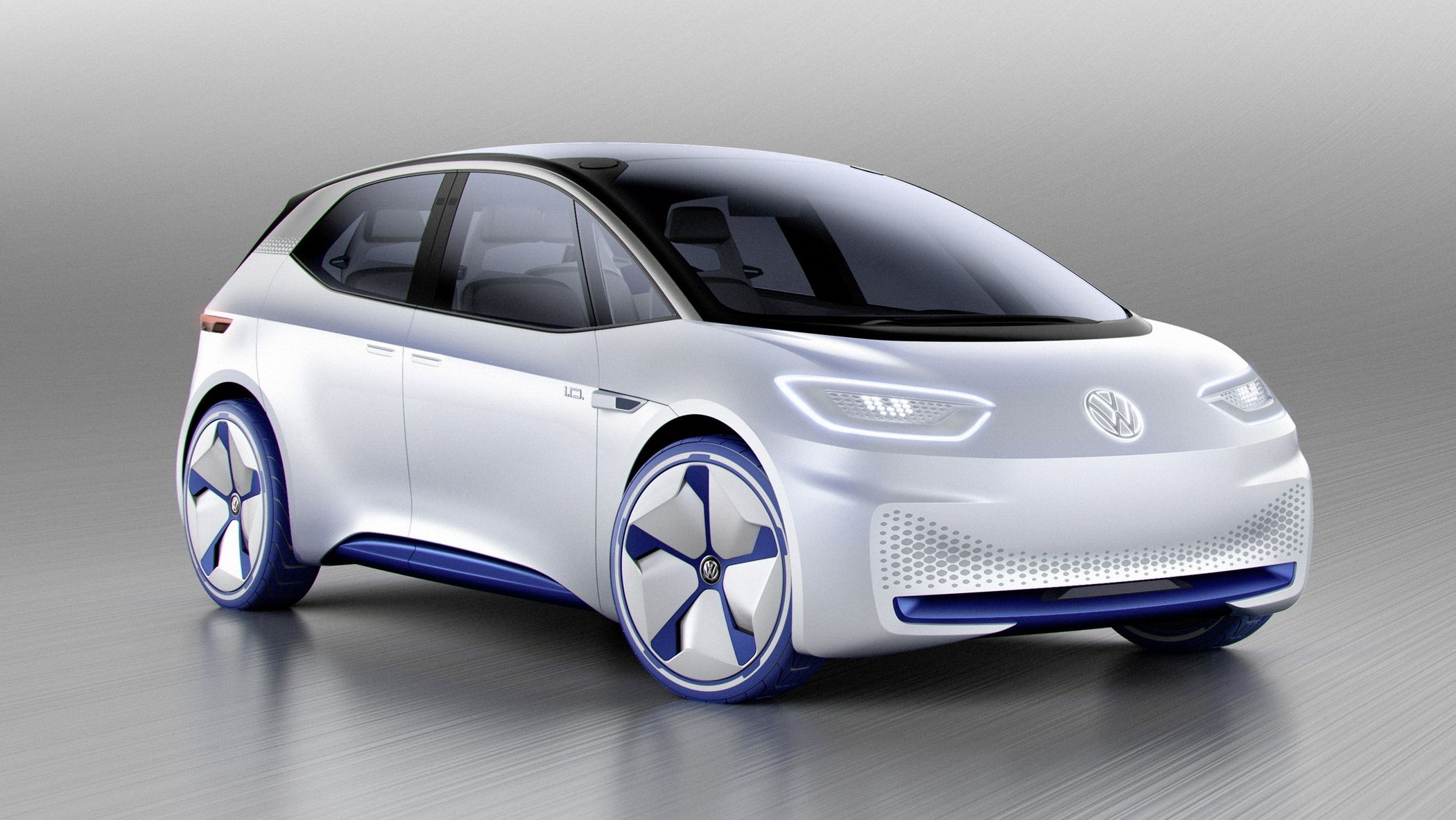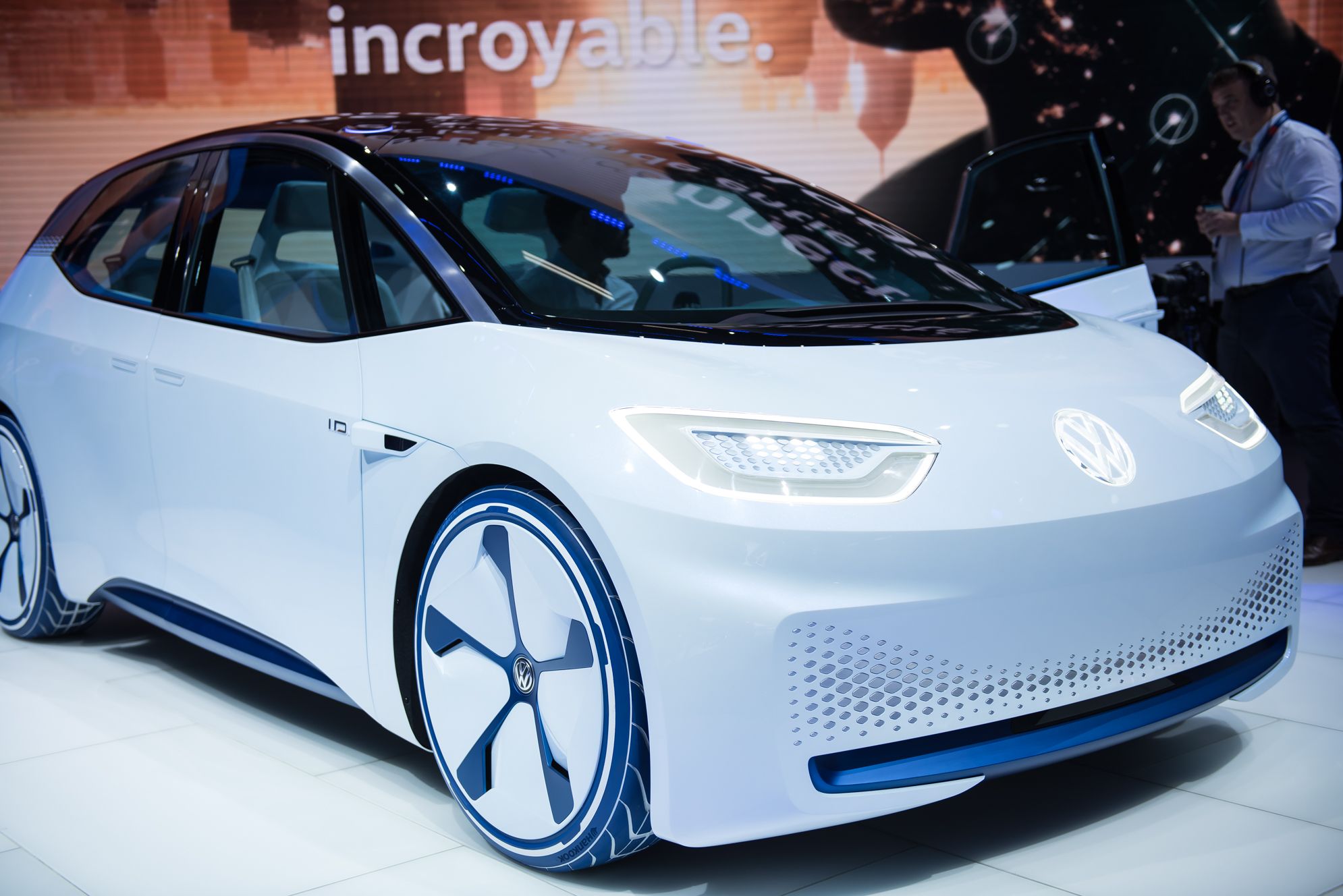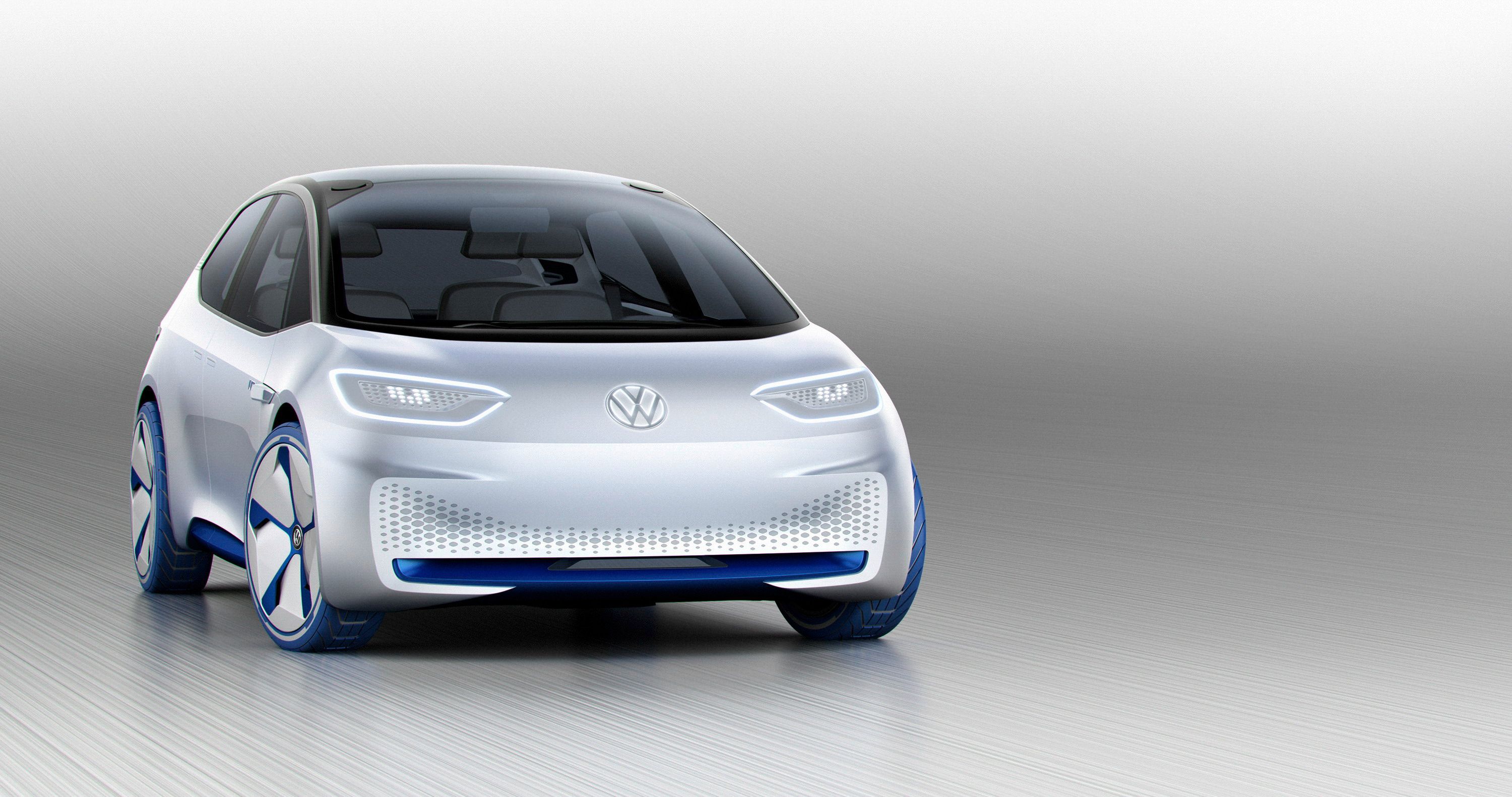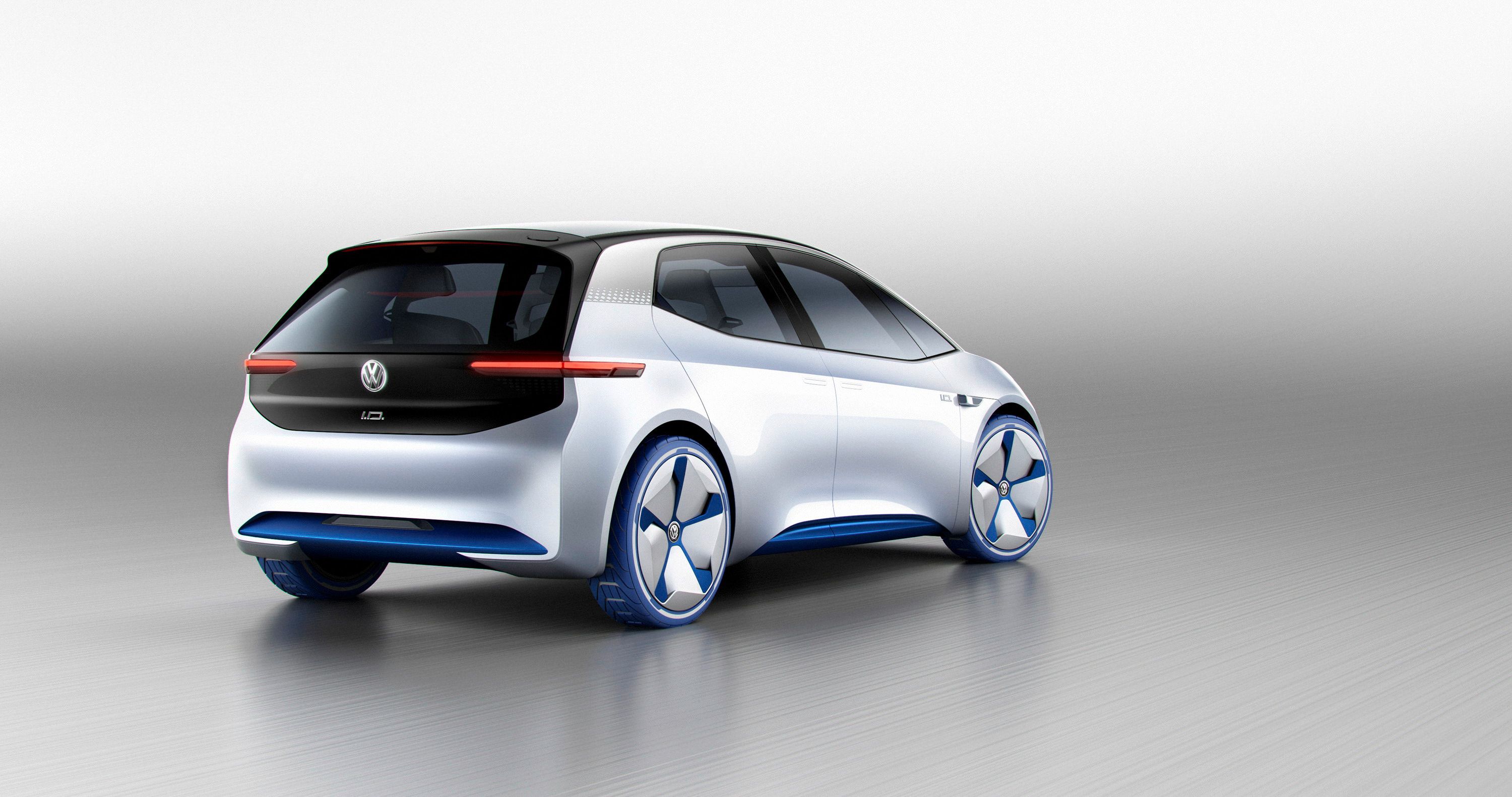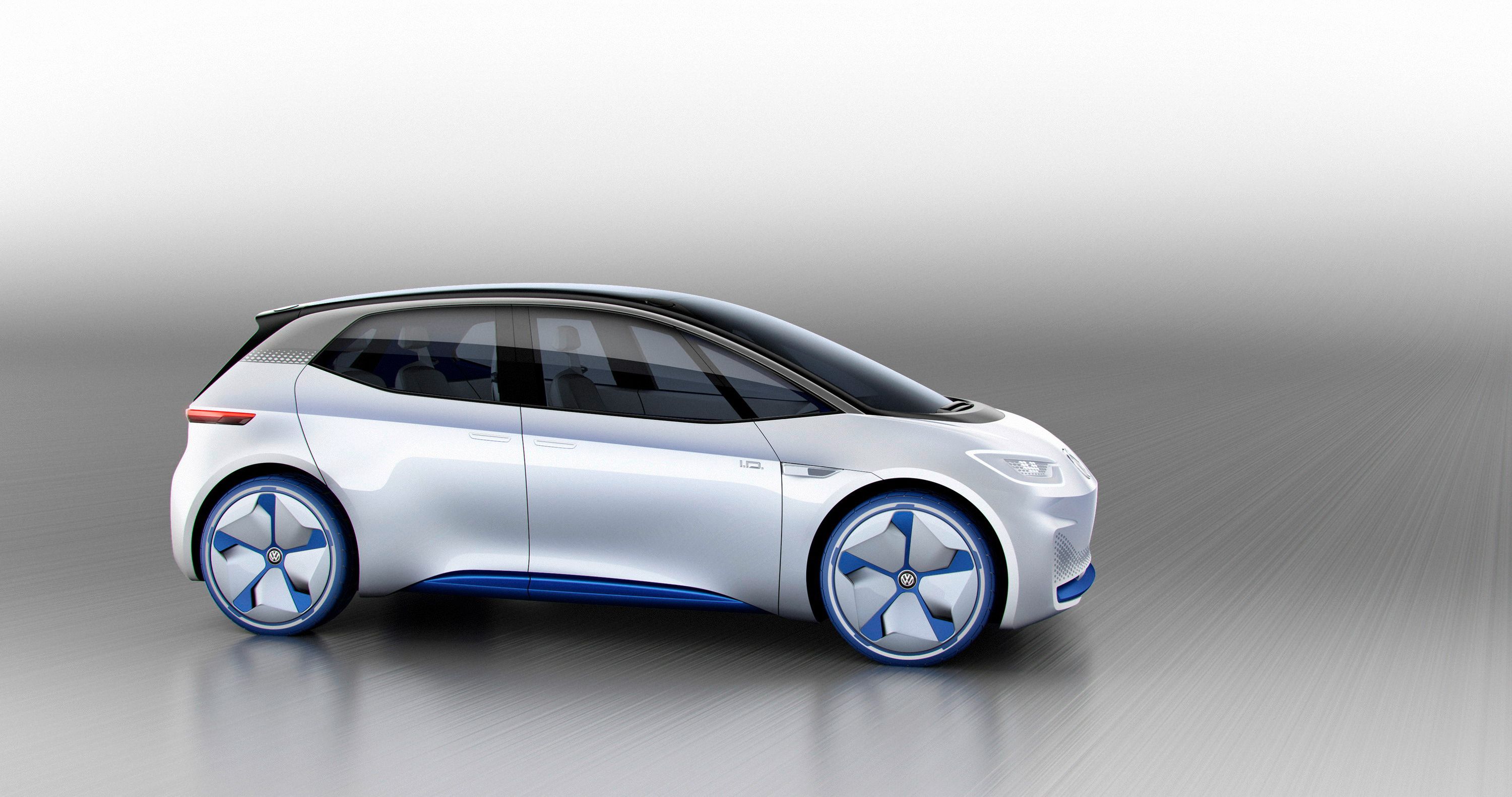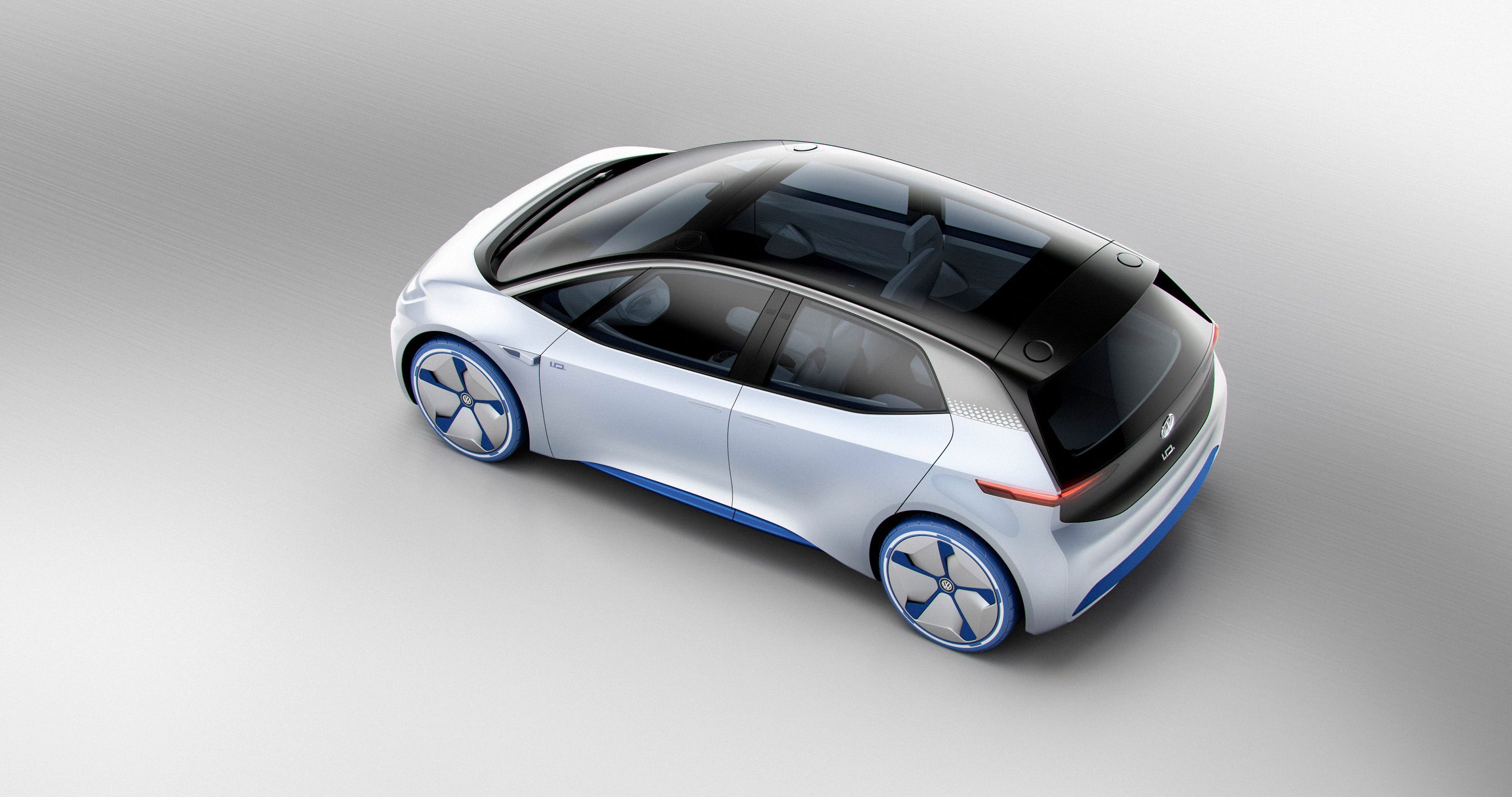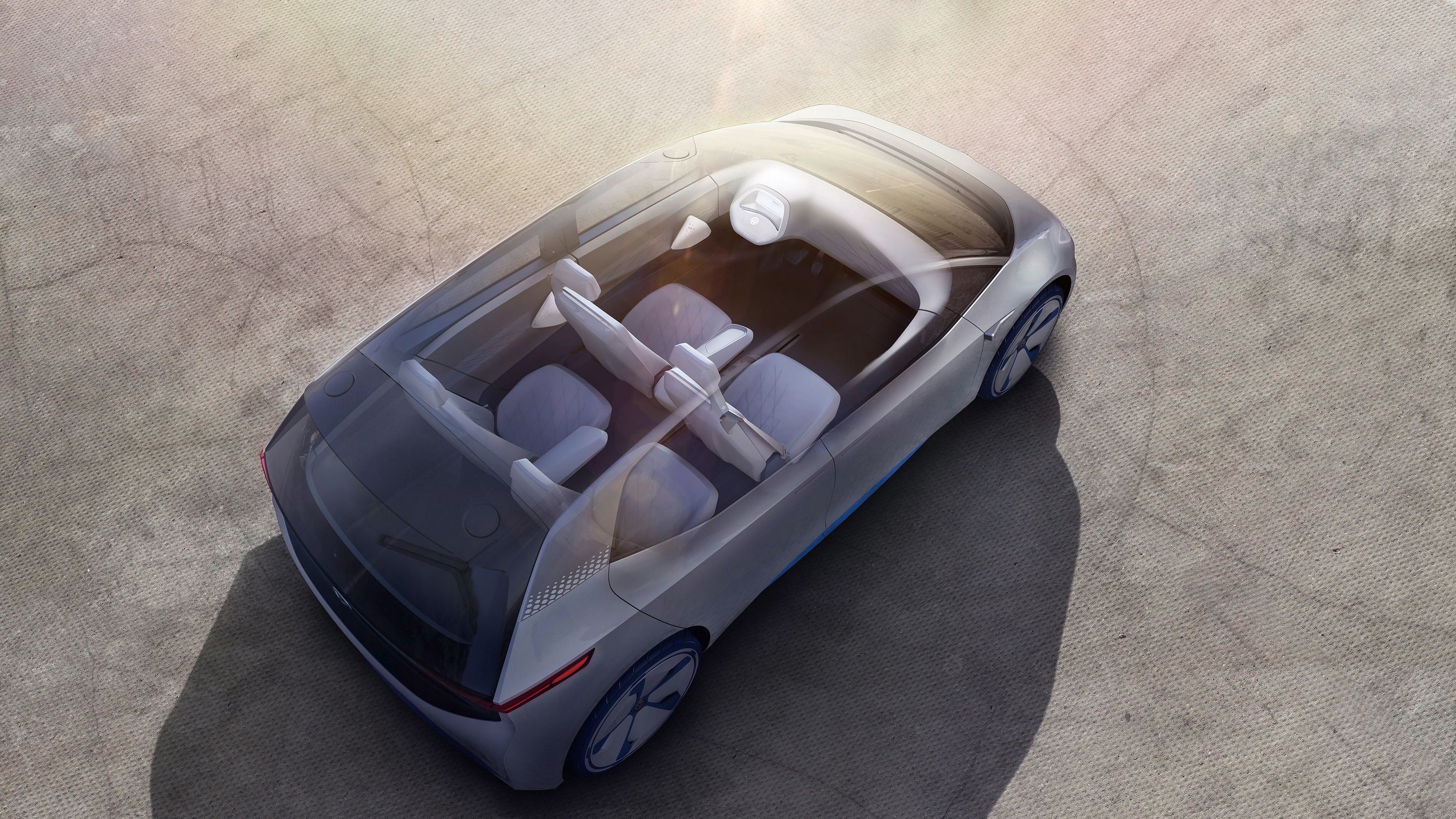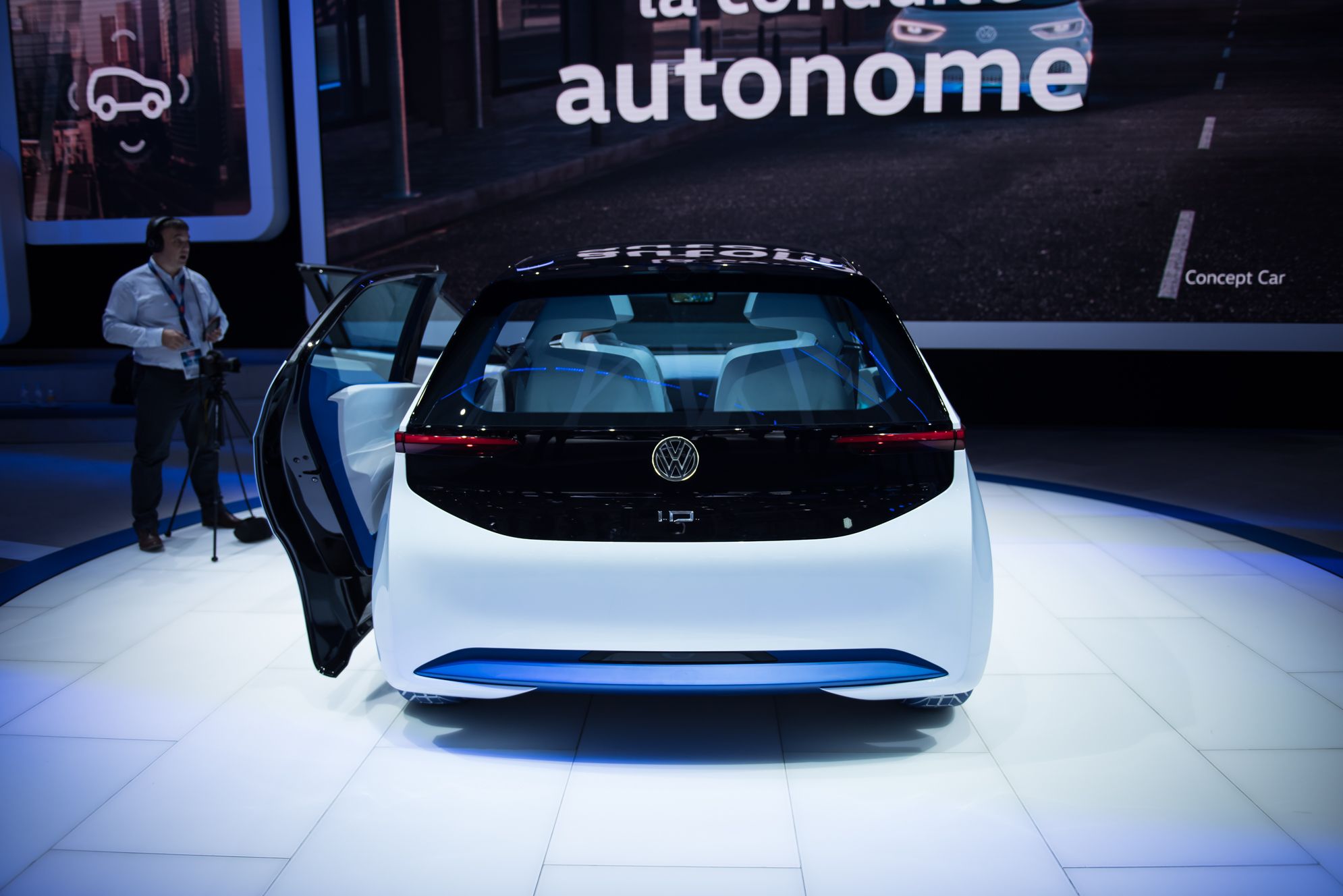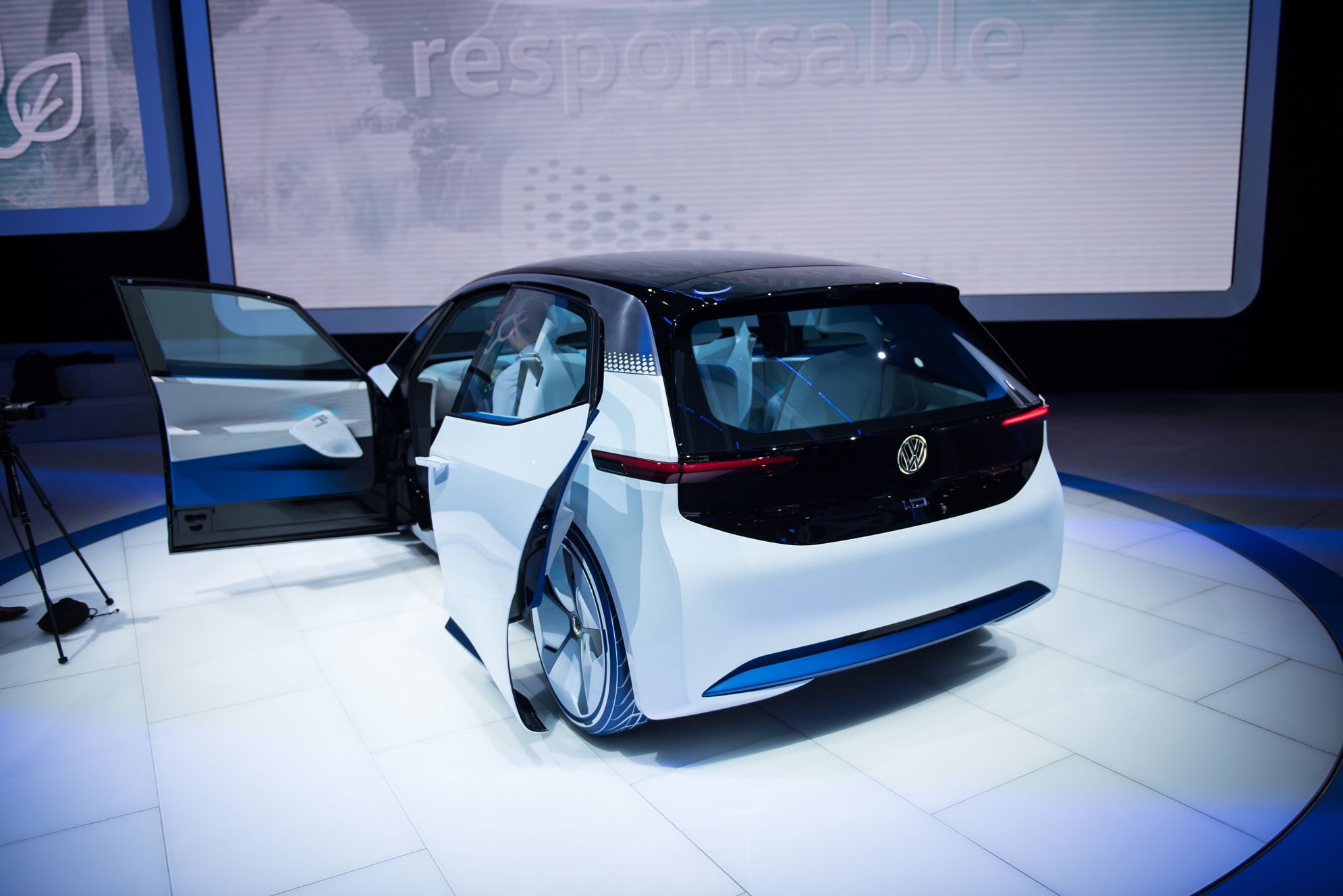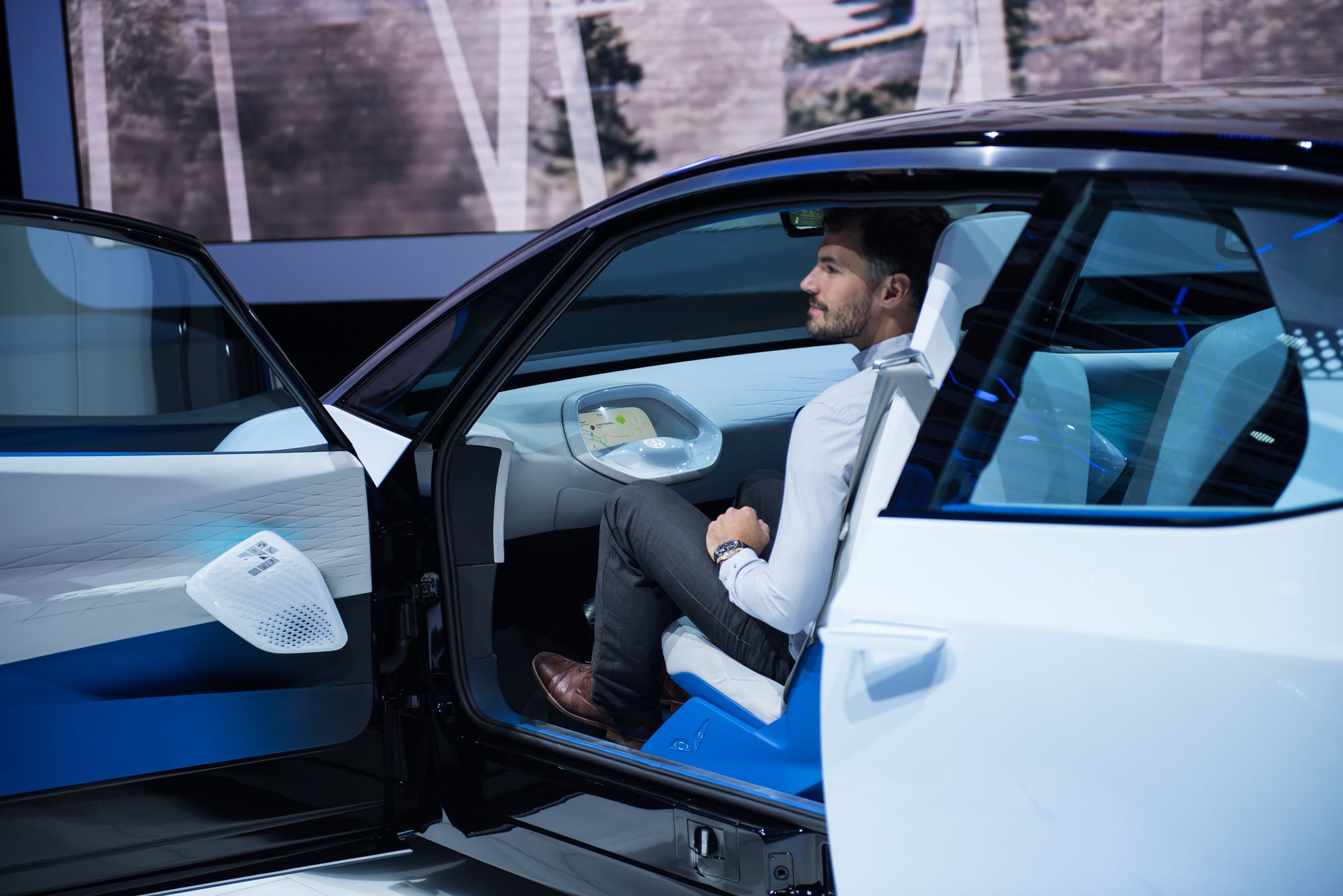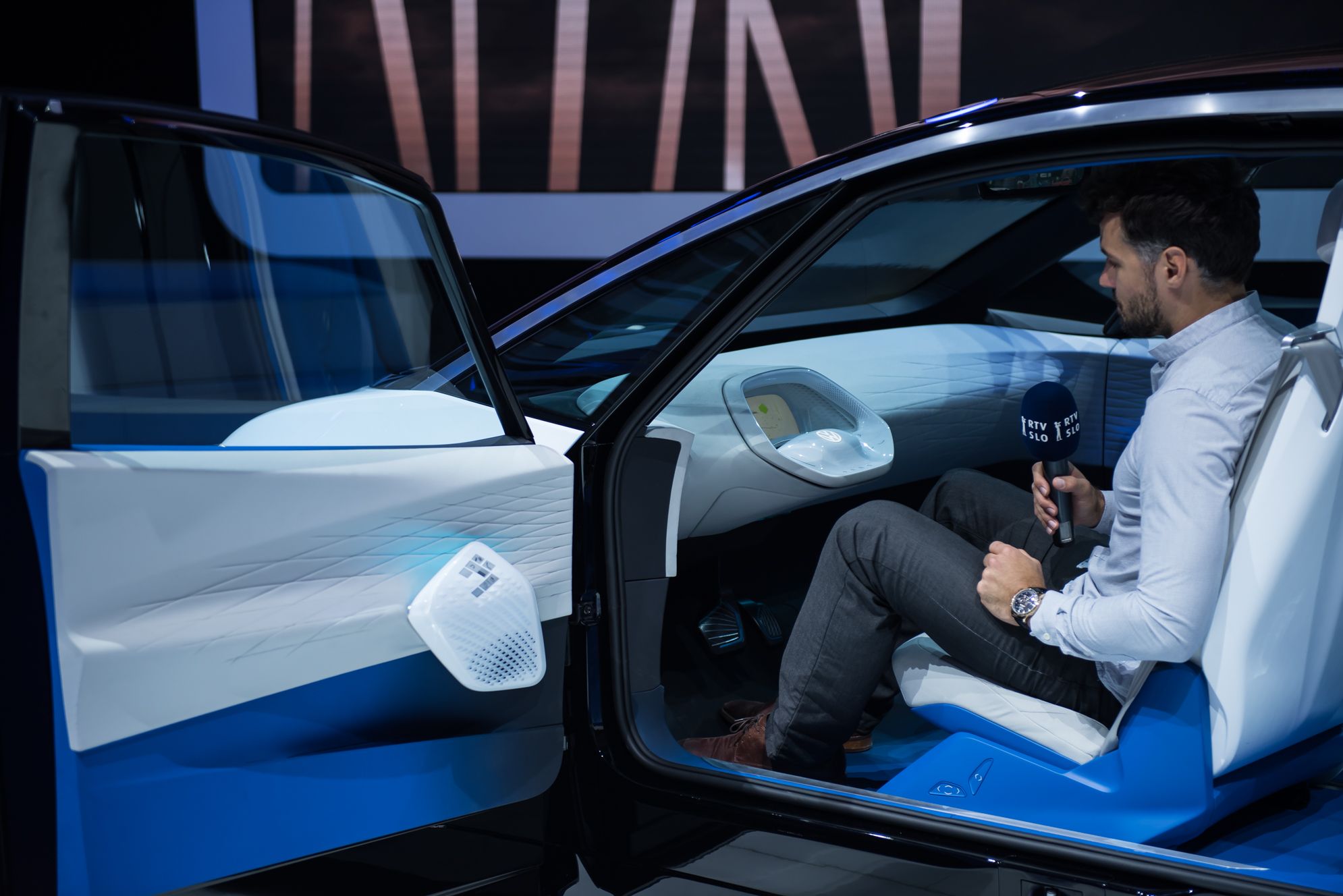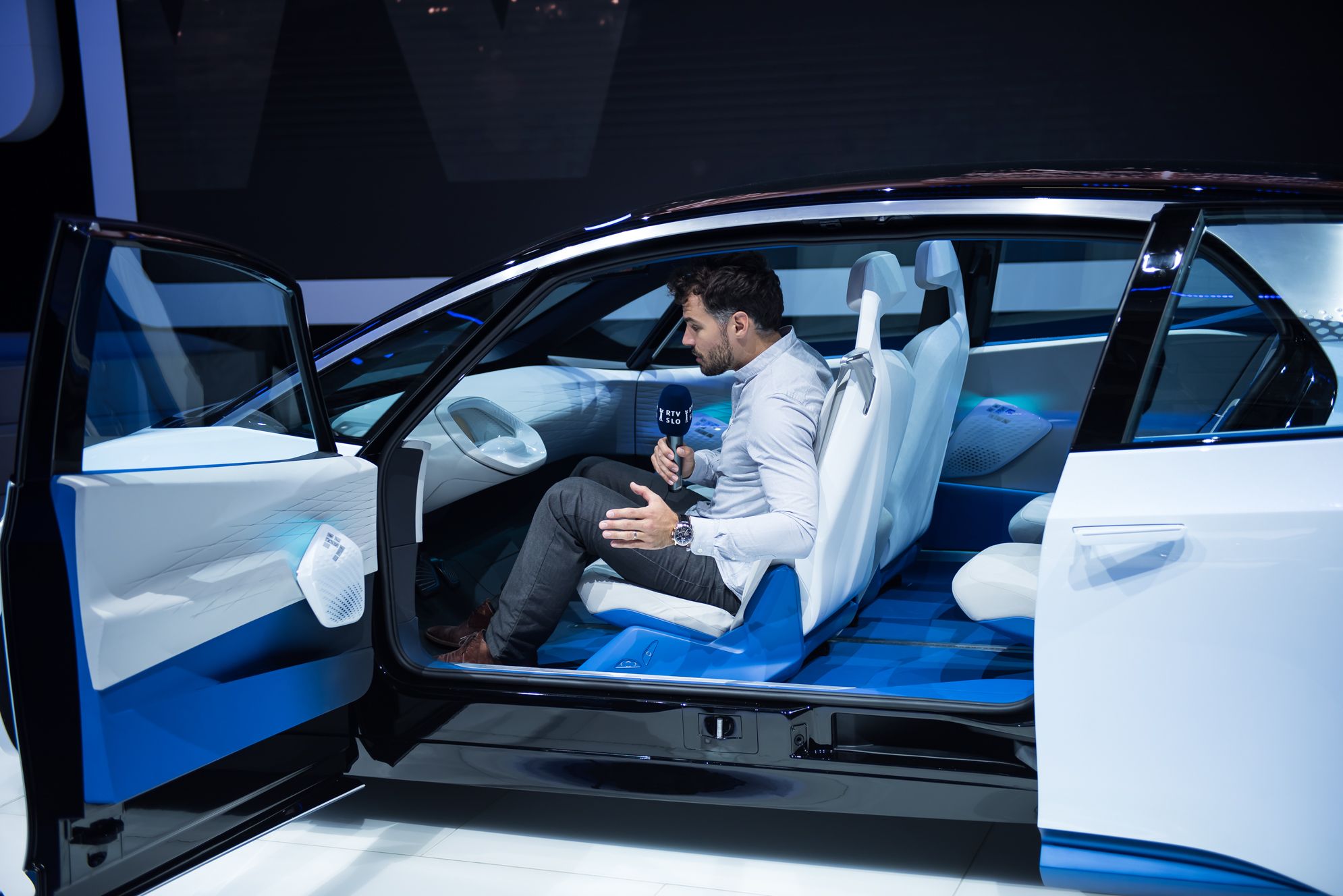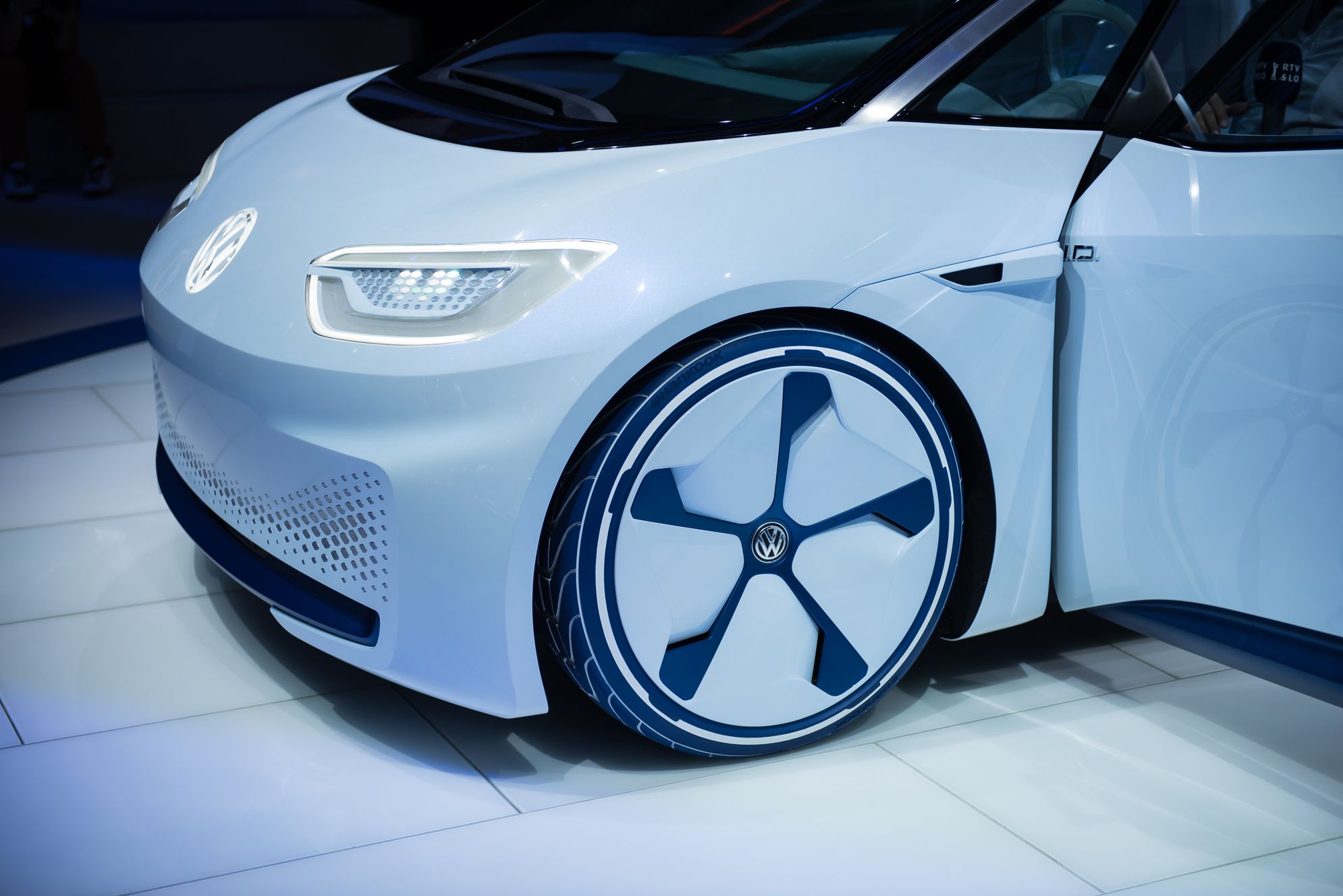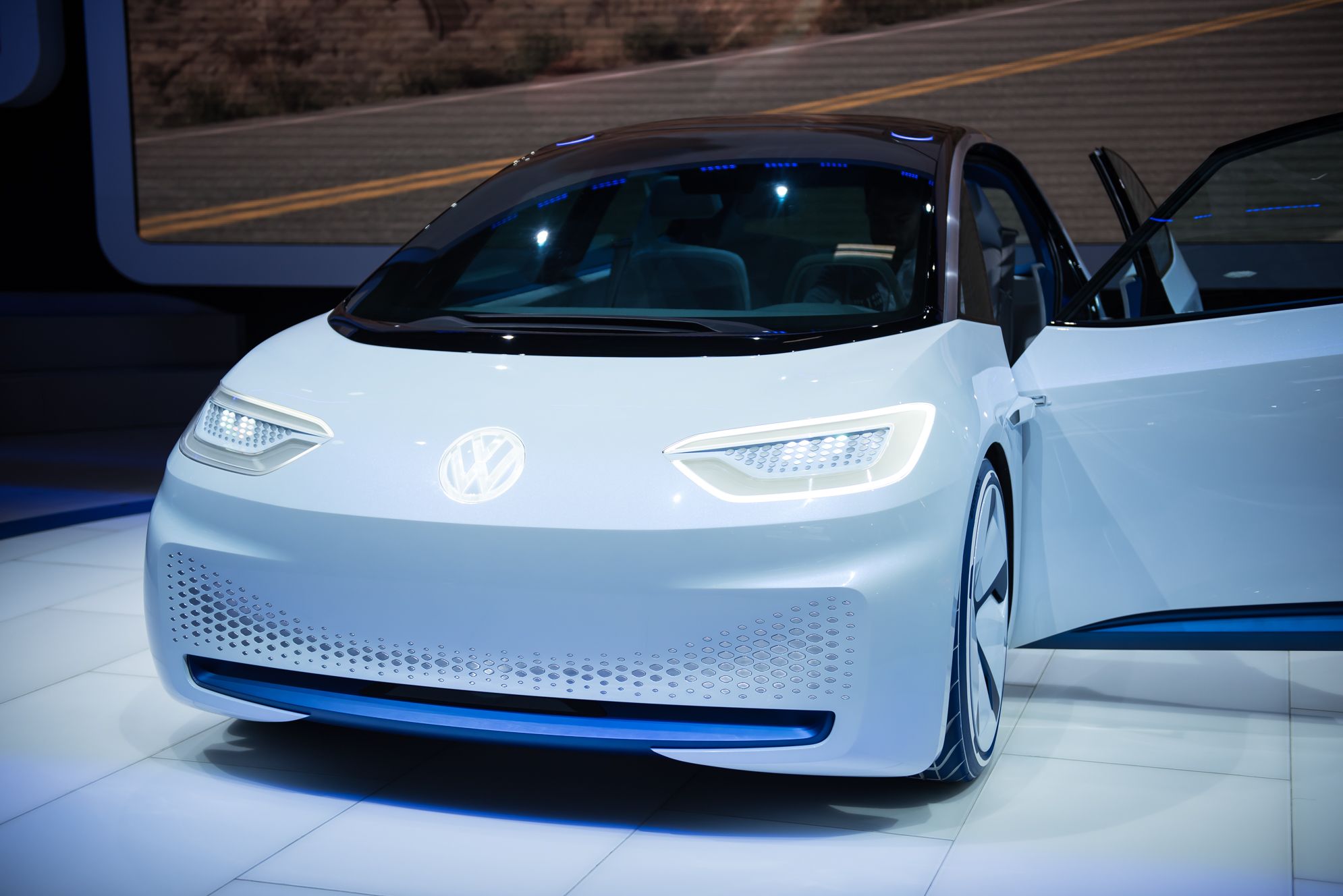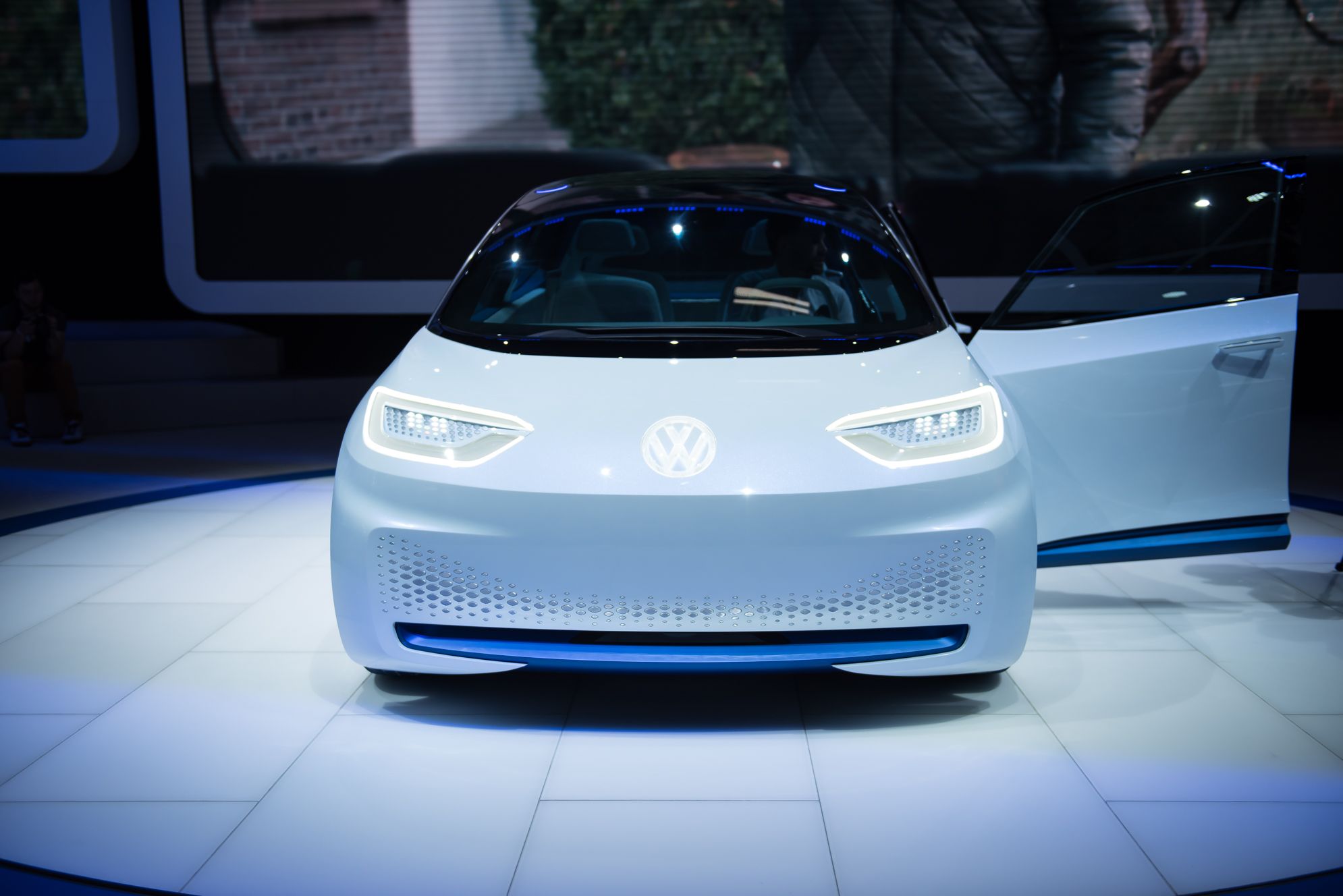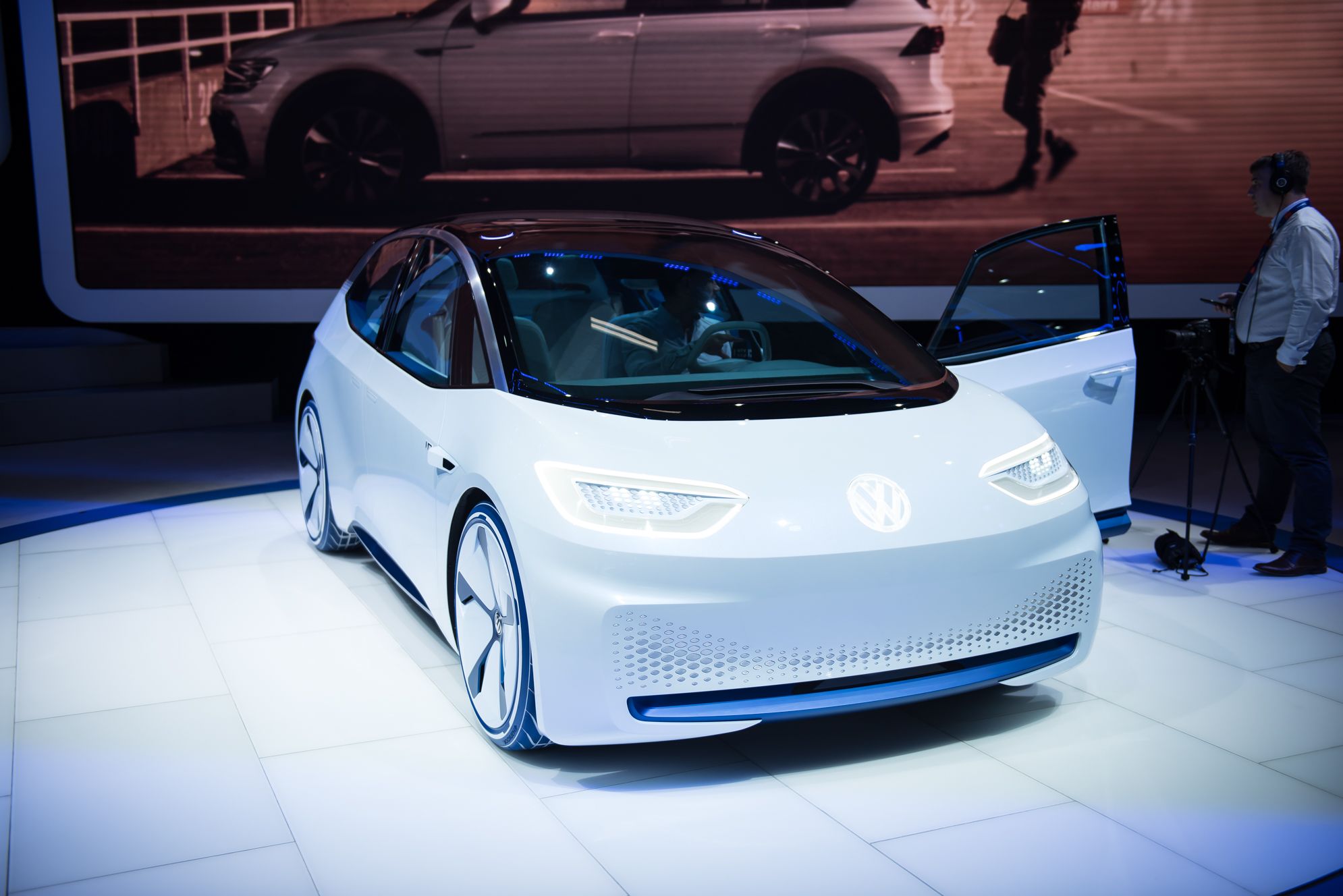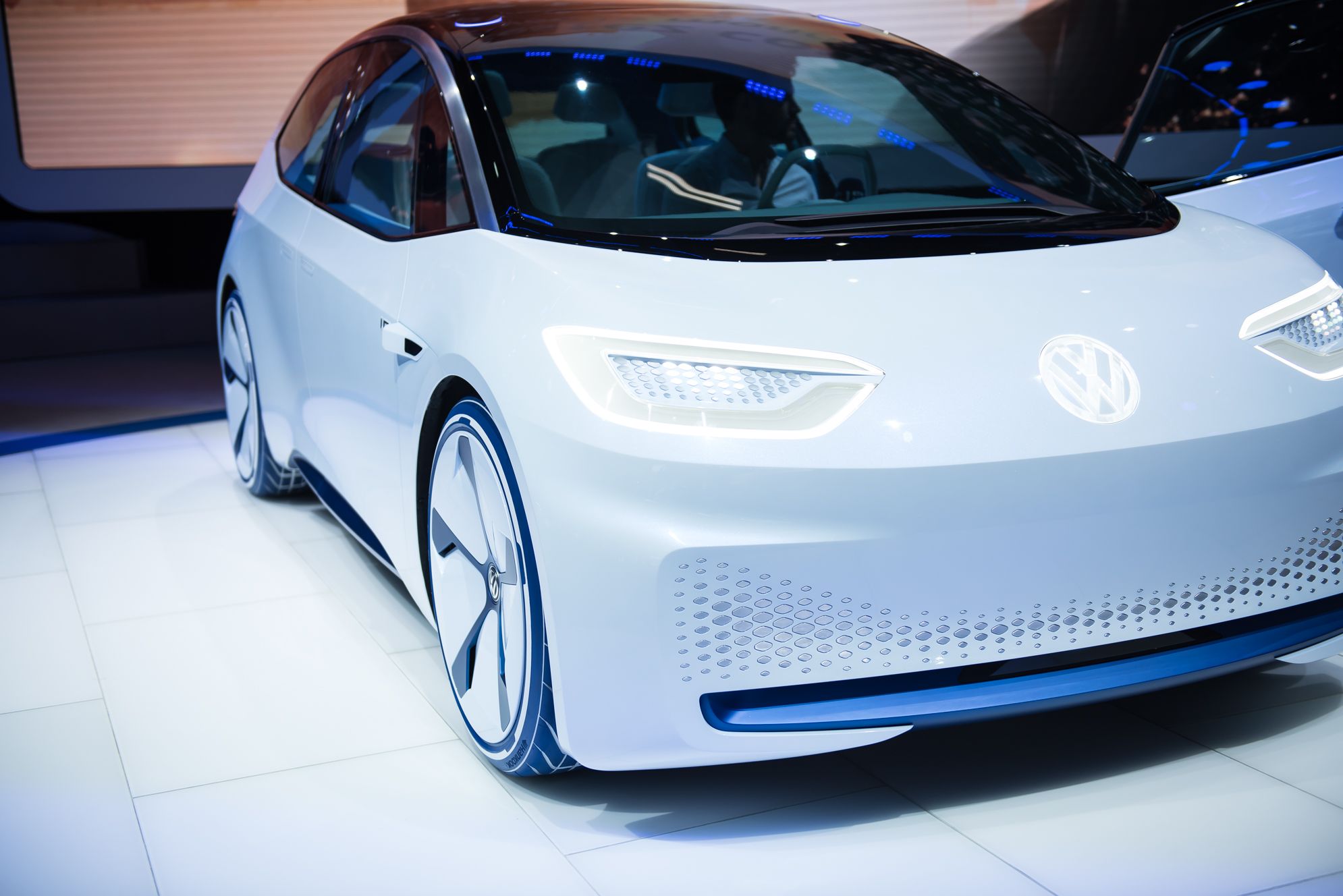Volkswagen got caught red handed cheating on emissions tests and lying to consumers worse than any other automaker and history. Since then, it has done its best to make us forget about it while it hemorrhages money at the speed of light. As such, VW has had to shift its focus completely and, instead of fighting the death of the diesel, the brand has decided to embrace our inevitable electrified future. Promising a range of 248 to 372 miles, the I.D. concept that you see here is slated to become a real production model by the turn of the decade. The all-electric and “zero-emission” powertrain isn’t the only big news here, though. This car also showcases VW’s future in the autonomous car market, with the plan to offer fully automated driving by 2025.
According to VW, the I.D. will definitely be hitting dealerships by 2020, but I’m sure it will be toned down a bit for production. It does feature certain things like a retractable steering wheel (for autonomous driving) and is said to be the first of many new electric vehicles that will be introduced to Volkswagen’s fleet. The car is built on Volkswagens MEB platform that is also known as the Modular Electric Drive Kit. All of this sounds pretty promising, but there is so much skepticism surrounding VW right now, that It’s probably best to take the brunt of this car with a grain of salt.
Either way, the car is unique in its own right, but it also features a look that we’ve seen before. We’ll talk about that a little later, though. For now, let’s dive on in and talk more VW’s latest electric concept.
Continue reading to learn more about the Volkswagen I.D. Concept.
2016 Volkswagen I.D. Concept
- Make: Array
- Model: 2016 Volkswagen I.D. Concept
- [do not use] Vehicle Model: Array
Exterior
Looking at the outside, the car does have a somewhat wild and conceptual appearance. Up front, we see one big shell that combines the nose, front fascia, and upper fenders into a solitary unit. The headlights have a perforated look to them, and in the images, only a portion of the perforations are actually lit up. This is certainly a feature that I highly doubt will make it into production, with VW likely going for more modern-looking LED headlamps. The LED outlining of the headlights will likely carry over to the production model. The upper portion of the fenders to feature a rather distinct and sharp body line that may carry over as they are likely used to improve the car’s overall aerodynamic nature. The lower portion of the fascia, where there would normally be a radiator grille features a unique layout of perforations that add some character to the front end. Down below there is a small air dam that likely channels are to the batteries. This air dam features a bright blue insert that helps to accent the front end.
The side profile is actually rather boring. There are no side view mirrors to speak up, as VW has decided to go with side-mounted cameras instead. This design has already found approval in at least one market overseas, but it’s unclear whether or not the U.S. will approve such a feature by the time the I.D. hits dealerships. If not, the car could look rather awkward with traditional side view units with this overall design. We’ll just have to wait and see what happens over the next four years. The side windows are rather sculpted with sharp points on the bottom. There is a stationary window ahead of the front windows that separate the doors from the A-Pillars. This is honestly somewhat dated but could provide better visibility, so I’ll give VW the benefit of the doubt. There is no stationary window in the rear quarters. Down below the waistline, there is a sharp body line that runs from the mid-fender seam all the way back to the rear. The rest of the body is smooth, but the doors take on a concave appearance in between the wheel wells. A blue insert at the bottom of the doors serves as a side skirt of sorts. The car rolls on white and blue rims that will probably never make it into production. I wouldn’t expect to see the blue tires when the car hits dealers in 2020 either.
Looking at the rear, this concept suddenly takes on the appearance of a spruced up Volkswagen Up that has weird taillights. Those taillights are thin in nature and wraparound from the rear hatch onto the rear quarters. There are no reverse lights to speak of, so VW will ultimately have to make some changes here before 2020. The hatch has a small overhang at the top with a high-mount brake light running nearly the full width of the overhang. The rear glass is rather slanted, and the car would look really weird without the overhang. The rear hatch sits rather high in the rear making it very small. The rear fascia is built into the shell of the car, so there are no seam lines. Outside of the chiseled edges on each side, the rear fascia is void of any character until you get down to that blue insert at the bottom.
All told, the car actually borrows a lot of cues from the VW Up and isn’t a huge departure from VW’s generic styling. I’ll give the brand credit for switching its focus over to electric mobility, but I expected the first major electric model from the brand to have more fresh styling on the outside. Then again, it is Volkswagen, and they have been known to cheat and be lazy, so there’s that.
Interior
The interior of the ID concept seems like a more realistic approach to the future of automobiles, with the exception of that weird retractable steering wheel. The interior offers what VW is calling a “new spatial experience with open space.” By that, it means that the interior is pretty much a dashboard and four bucket seats. The seats themselves have a hardened shell on the rear and bottom that is padded with some rather comfortable looking cushions. The seat cushions are remarkably thick, and the white coloration of seats lead me to think of comfortable memory foam for your bum. The rear seats look almost identical to the front seats with a movie-theatre styled mounting that makes the seat cushions appear to hover in place. This also allows for extra storage space under the seats.
The rear doors slide open similar to that of a minivan, and there is no center pillar – something I’m not sure will pass U.S. safety regulations, but we’ll know more about that as we get closer to 2020. The door trim panels are primarily white with the front doors offering a stretched-diamond quilting pattern. Each door has a weird element protruding from it that has window controls and undoubtedly hides a speaker behind the perforated area. From an inside perspective, the upper door trim follows the wavy contour of the waistline outside, which is somewhat refreshing to look at. There are, however, no arm rests for rear passengers – a feature I’m not sure will be appreciated in the production model
Up front, there is no center console as we know it. There is a small central armrest that looks to house a rather slim storage area – probably perfect for holding an owner’s manual, registration, and proof of insurance, but not much else. In the name of openness, this central armrest is supported by a thin arm that follows the contour of the rear seats, leaving nothing but open space below it. The dash wraps around and meets up with the door trim perfectly and also features that stretched out diamond quilting seen on the front doors. There is no traditional infotainment system to speak of. The only display screen is located ahead of the driver and is visible whether the steering wheel is retracted or not. Obviously, this screen delivers vital vehicle information like the current charge of the battery, vehicle speed, outside temperature, and GPS information.
The headliner and carpeting are bright blue, matching the accents on the outside of the vehicle. There is also blue found on the bottom frame of the seat cushion and on the seat mounting support that secures it to the floor board. The bottom portion of the door trim panels also gets the blue treatment. I must say that the white and blue natural of the car is utterly brilliant, but this car doesn’t seem like it would be a very entertaining place to be on longer road trips. Sure, the driver has a screen to look at, but that also means he is responsible for controlling the radio controls as well. I don’t know about you, but it’s nice to let the co-pilot handle music selection from time to time.
Drivetrain
Volkswagen has kept a lot of details of the powertrain a secret, but we do know that the car is based on the Modular Electric Drive Kit or MEB platform. It is also said to have an electric motor that offers up 125 kW or a mundane 167 horsepower. That serious lack of power does allow for a decent range of anywhere between 248 and 372 miles on a single charge. Of course, VW has yet to release any information about the battery used in this concept or what will come in the production model, so how long it will take to charge, or exactly how it will be charged is a complete mystery at this point.
The range is quite impressive, and VW can’t exactly cheat on emissions tests with an all-electric car, but I’m still not all that impressed with the concept. In a lot of cases, less really is more, and I think the interior is rather inviting. However, I think VW could do a lot better on the power output while maintaining a decent range. Mercedes announced its EQ concept around the same time with a similar range and just over 400 horsepower. Furthermore, VW only mentions one electric motor, and I’m pretty sure that we can all agree that the future of electric cars will undoubtedly bring AWD to most makes and models.
Conclusion
It’s easy to appreciate VW’s ambition to get past the whole Dieselgate scandal and bring something worthwhile to the market. This concept is said to be the first in a whole fleet of electric vehicles, which could be a big deal for the brand. The problem is, I think the company may end up finding that people are reluctant to trust their stated range figures given its nature of being deceitful in the past.
When the model becomes a reality in a few years, I hope VW goes far enough to include more entertainment features for passengers, even if it is the addition of a tablet for the other three seats. Putting everything in front of the driver is awesome if you own the car and drive it on a regular basis, but it leaves absolutely nothing for the passengers to do on longer trips. The cabin looks spacious and very open, which is obviously what the engineers were going for, and it is planned to be fully autonomous by 2025. That in itself will be another battle for VW to take on, but by then, it should be able to turn around the trust of consumers as long as it doesn’t foul up anymore between now and then. So far, VW, I’m impressed. Keep it up, and you might just get out of this hole that you dug yourself into.

